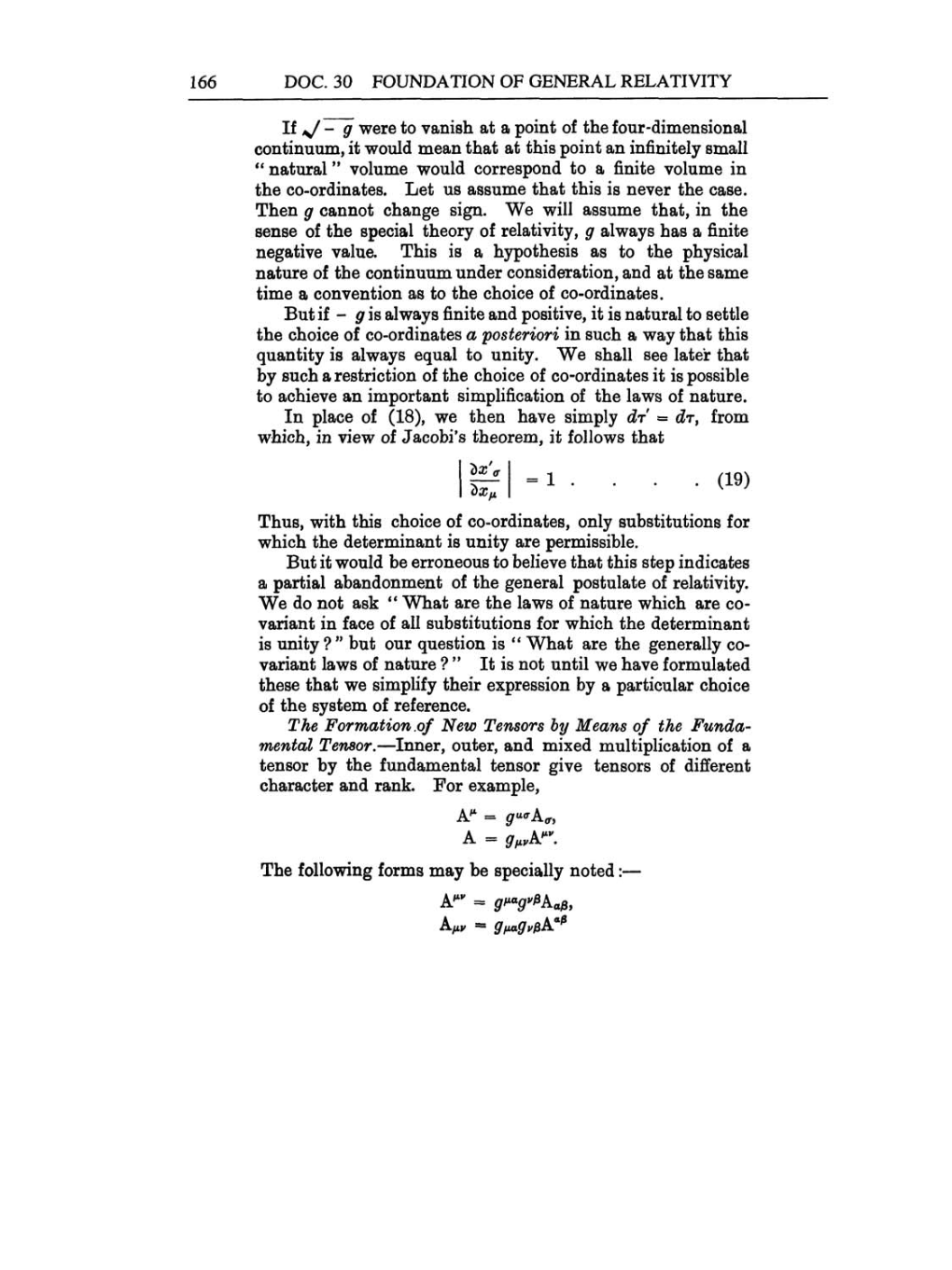166
DOC.
30 FOUNDATION OF GENERAL RELATIVITY
If
\/
-
9 were
to
vanish at
a
point
of
the
four-dimensional
continuum,
it
would
mean
that at this
point
an
infinitely
small
"natural"
volume would
correspond
to
a
finite volume
in
the
co-ordinates.
Let
us
assume
that this
is
never
the
case.
Then
g
cannot
change
sign.
We
will
assume
that,
in the
sense
of
the
special
theory
of
relativity,
g always
has
a
finite
negative
value.
This is
a
hypothesis
as
to the
physical
nature
of
the continuum under
consideration, and
at the
same
time
a
convention
as
to
the
choice of co-ordinates.
But
if
-
g
is
always
finite and
positive,
it
is
natural
to
settle
the
choice of co-ordinates
a
posteriori
in
such
a
way
that this
quantity
is
always
equal
to
unity.
We shall
see
later that
by
such
a
restriction
of
the
choice of
co-ordinates it
is
possible
to
achieve
an
important
simplification
of
the
laws
of
nature.
In
place
of
(18), we
then have
simply
dr'
=
dr, from
which,
in view of
Jacobi's
theorem,
it
follows
that
dxu
=
1
....(19)
Thus,
with this
choice of co-ordinates,
only
substitutions
for
which the determinant
is
unity
are
permissible.
But it
would be
erroneous
to believe
that this
step
indicates
a
partial
abandonment
of
the
general
postulate
of
relativity.
We
do
not
ask
"What
are
the
laws of
nature
which
are co-
variant
in
face of
all
substitutions
for
which the determinant
is unity?"
but
our
question
is
"What
are
the
generally
co-
variant
laws of
nature?" It is
not
until
we
have
formulated
these
that
we simplify
their
expression by a
particular
choice
of
the
system
of reference.
The
Formation
of
New Tensors
by
Means
of
the
Funda-
mental Tensor.-Inner,
outer,
and
mixed
multiplication
of
a
tensor
by
the fundamental
tensor
give
tensors
of
different
character and
rank.
For
example,
Au
=
guoAo
A
= guvAuv.
The
following
forms
may
be
specially
noted:-
Auv
=
guagvbAab,
Auv
=
gnagyßkaß
